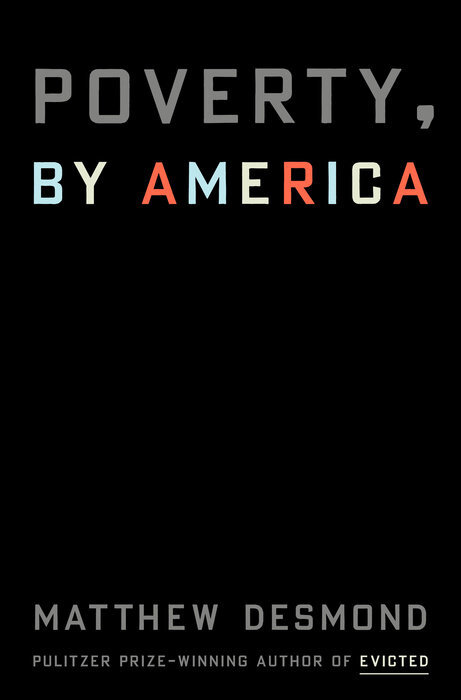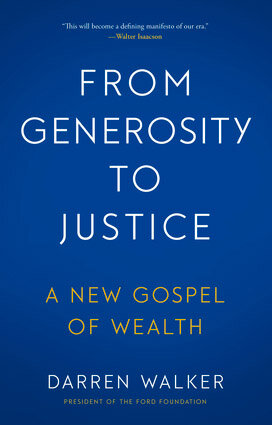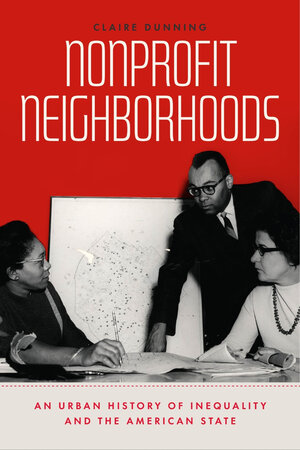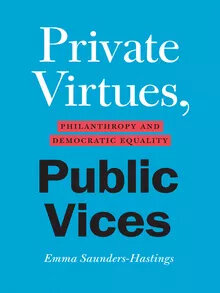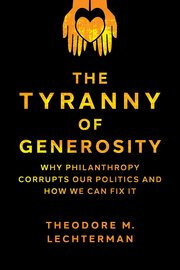Poverty, by America
“Books about poverty tend to be books about the poor,” notes Matthew Desmond, the Pulitzer Prize-winning author of Evicted: Poverty and Profit in the American City. In his latest book, to answer the question “Why is there so much poverty in America?” he focuses on “how the other other half lives,” that is, how the rest of us—including those who do not consider ourselves affluent—help perpetuate a system that exploits, disempowers, segregates, and blames the poor.
At a time when foundations are reexamining the sources of wealth that made—and continue to make—their philanthropic work possible and the nonprofit sector routinely highlights the need to address the root causes, rather than the symptoms, of “systemic” and “structural” social inequities, the book brings into sharp focus our own complicity as individuals in maintaining that inequitable system, even indirectly. Now director of the Eviction Lab at Princeton University, Desmond grew up in relative poverty and has studied the issue up close and from all angles; his argument is convincing and gut-wrenching.
In titling the book Poverty, by America—not Poverty in America—as in, poverty designed, manufactured, and brought to you by America, Desmond gets straight to the point: The richest nation in the world has made no progress in reducing poverty in half a century because we have created political, economic, financial, regulatory, and social mechanisms that underpay, undercut, and under-resource the poor. For the self-perceived socially conscious, well-meaning reader, it entails an uncomfortable reckoning but one that leaves room for hope: If we created the system, we can also dismantle it.
In just under 200 pages, Desmond succinctly illustrates the what, why, and how of persistent poverty. Poverty is not only a lack of money but also job and housing insecurity, injuries and chronic health issues from long hours at dangerous jobs, trauma from family or neighborhood violence, the stress of living precarious lives, and the consequences of coping with that stress without access to health care. Myths about poverty such as the role of immigrants, single parents, “welfare queens,” and the “bad choices” the poor make have led to inaction. He does not mince words in reminding us that what we call “systemic” problems are “made up of untold numbers of individual decisions motivated by real or imagined self-interest.” “[O]ne man’s poverty [is]another man’s profit,” he writes. “Poverty persists because some wish and will it to.”
[W]hat we call “systemic” problems are “made up of untold numbers of individual decisions motivated by real or imagined self-interest.”...“Poverty persists because some wish and will it to.”
For example, not only corporate bosses but all of us consumers and shareholders—anyone with a 401(k) or 403(b) account—benefit from low labor costs, so workers are prevented from securing better wages, benefits, and work environments. Half of Medicaid beneficiaries and Supplemental Nutrition Assistance Program (SNAP) beneficiaries work full-time year-round and still cannot make ends meet. We justify this exploitation, Desmond points out, with the long-disproven claim that raising the minimum wage will kill jobs.
We also exploit the poor by forcing them to pay more for housing, mortgages and other loans, and even checking accounts, making it impossible to save. Since the Great Migration days, renters in poor neighborhoods have paid more for worse housing than in affluent areas because they have had no other choice. In the financial industry, exclusion from traditional banking and credit mechanisms forces the poor to use high-fee accounts, check-cashing services, and payday lenders—some financed by Wells Fargo and JPMorgan Chase in what historian Keeanga-Yamahtta Taylor has called “predatory inclusion.” “What good is financial literacy training for people forced to choose the least bad option?” Desmond asks. So the poor become poorer; homeownership as a wealth-building pathway is hardly a viable option.
As a result, the poor rely on welfare…or do they? Contrary to racist misperceptions that the majority of welfare recipients are Black and that such assistance fosters dependency, Desmond notes, research has shown that “the welfare system does not foster reliance on welfare so much as it acts as insurance against temporary misfortune.” In fact, three-quarters of those eligible for Temporary Assistance for Needy Families, more than half the elderly eligible for SNAP, one in five parents eligible for Medicaid or Children’s Health Insurance, and one in five workers eligible for EITC do not claim those benefits—often due to a lack of information and access, another kind of poverty.
In 2020, the government spent more than $193 billion on homeowner subsidies and just $53 billion on housing assistance for low-income families. An average household in the top 20 percent of income distribution receives $35,363 a year in government subsidies (including health insurance, retirement benefits, 529 college savings, etc.), compared with $25,733 for a household in the bottom 20 percent.
As Desmond makes clear, the majority of public assistance currently goes not to the families most in need but to comparatively affluent ones. In 2020, the government spent more than $193 billion on homeowner subsidies and just $53 billion on housing assistance for low-income families. An average household in the top 20 percent of income distribution receives $35,363 a year in government subsidies (including health insurance, retirement benefits, 529 college savings, etc.), compared with $25,733 for a household in the bottom 20 percent.
Yet, because the affluent depend less on public services such as public housing and transportation, Desmond argues, “they increasingly seek to divest from them. This leads to ‘private opulence and public squalor,’ a self-reinforcing dynamic.” That dynamic, a backlash against desegregation and other civil rights gains, drove the 1981 federal tax cut that slashed the Department of Housing and Urban Development budget by 70 percent, a California ballot measure to eviscerate education spending, and zoning laws banning apartment buildings that, to this day, keep low-income families in high-poverty neighborhoods with under-resourced schools.
The message could not be clearer: By deluding ourselves that we are doing all we can to address an insurmountable problem, while at the same time voting to preserve our tax benefits and exclusionary zoning laws, we are exploiting the poor by limiting their choice and power in the labor, housing, and financial markets; prioritizing the subsidization of affluence over the alleviation of poverty; and perpetuating residential segregation. Given that money buys power and opportunity of every kind and has kept that system firmly in place, “those who have amassed the most power and capital bear the most responsibility for America’s vast poverty,” Desmond writes, but we each contribute to what the sociologist C. Wright Mills called “structural immorality.” Yes, we.
So what is to be done? The book, portions of which are excerpted from his articles in the New York Times and RSF: The Russell Sage Foundation Journal of the Social Sciences, does not advocate for “redistribution of wealth” but rather a “capitalism that works for the people and not the other way around.” He calls on readers to become “poverty abolitionists” and work to “deepen our collective investment in economic stability and basic dignity.” According to Desmond, it would take $177 billion to raise every household currently below the federal poverty level above it; simply collecting unpaid federal taxes from the wealthiest 1 percent would secure $175 billion.
While the book proposes guiding principles for an antipoverty agenda—“Rebalance the safety net and insist on tax fairness in order to make significant investments in eliminating poverty through policies supported by broad coalitions”—it does not prescribe detailed policy recommendations. What it does is show how many targeted and universal options would be available—from closing tax loopholes, to expanding the Child Tax Credit and EITC, to making the emergency COVID-related expansions permanent—to unite and empower all economically insecure people and ensure greater choice and fairness in work, housing, access to capital, and reproductive choice, all of which are directly linked to poverty.
That is, if the political and personal will are there. For poverty abolitionism is both “a political and a personal project,” Desmond reminds us. His suggestions for individual consumer activism include conducting an “audit” of our choices in retailers and delivery services, investment portfolios, support for alma maters and other institutions, etc.; attending community planning meetings; voting for inclusionary zoning; and getting over the scarcity mindset that pits social justice issues against one another and results in inaction and “disfigured humanity.”
Desmond urges poverty abolitionists to organize into a movement, “get into relationship” with working-class and poor people, publicize their actions, and ask others what they are doing to “divest from poverty.”
Desmond urges poverty abolitionists to organize into a movement, “get into relationship” with working-class and poor people, publicize their actions, and ask others what they are doing to “divest from poverty.” He doesn’t make it sound easy; as the term “abolitionist” suggests, it will require a sustained movement led by courageous individuals and supported by a broad segment of society.
“If charity were enough, well, it would be enough, and this book would be redundant,” Desmond writes. Given that poverty rates are expected to worsen as pandemic-era benefit expansions expire and grassroots racial justice movements continue to be underfunded, the need to take action is as urgent as ever. And the fact that it is a discomfiting read for many who see themselves as neither wealthy nor complacent is proof of how relevant and necessary the book is today.
Kyoko Uchida is features editor at Philanthropy News Digest.


